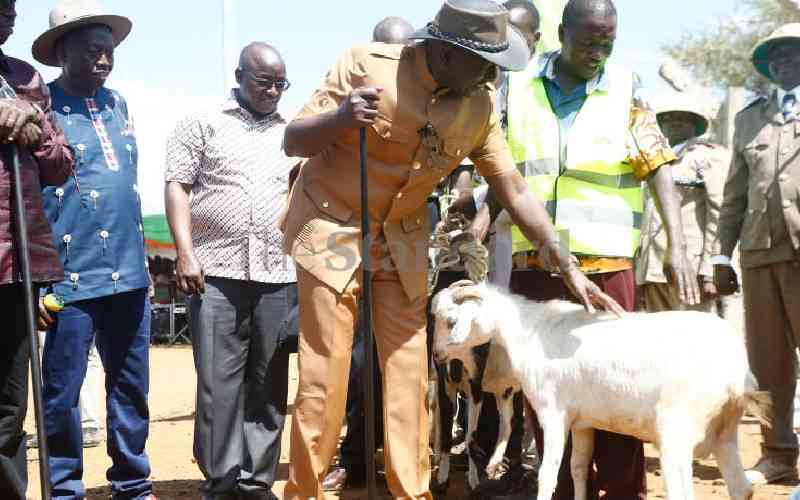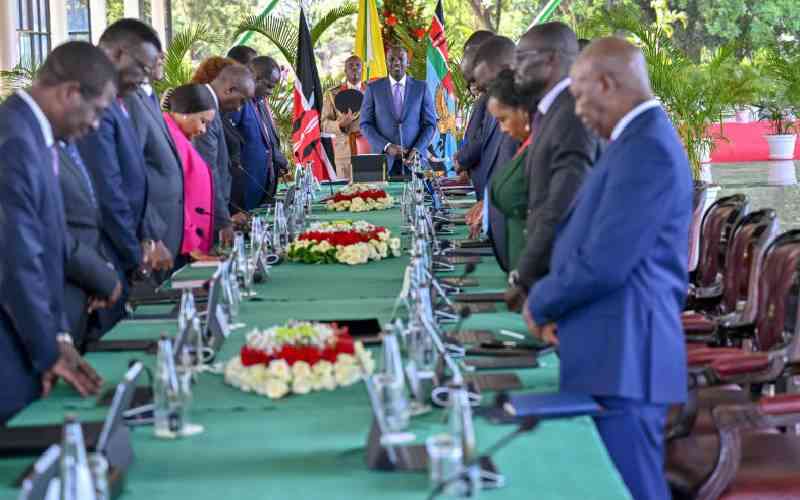BY JOSEPH KARIMI
NAIROBI, KENYA: On Friday, October 24 1969, the late President Jomo Kenyatta toured Western Province to familiarise himself with the development in the province. The following day, he was in Nyanza for a similar tour which culminated in the official opening of the Russian sponsored hospital project (Oginga Odinga Referal Hospital, Kisumu).
While in Western Province, the President passed by the administrative district headquarters of Webuye.
In their speeches, local leaders emphasised how the province stood to gain from the tourism industry as the region had an attractive landscape with forests, rivers and animals that would attract foreign tourists, pointing out the Broderick Falls as a major key attraction.
Kenyatta echoed their aspirations and encouraged the promotion of tourists to be put in top gear. He then spoke about the foreign names of such attractions like the Broderick Falls, wondering why some prominent tourist spots continued to bear names of foreigners.
“I want to tell people of Western Province that I felt ashamed trying to pronounce….Bro…bro…bro…derick falls. These are names reflecting servitude…Why can’t you look for better local names with local content, names we know of their origin?” There and then, the President issued a directive that both the leaders and locals look for a substitute name for the tourist feature.
He caused laughter when he asked: “Which Luhya man was called Broderick? Broderick was whose relative? A name is very important for identity. Which foreigner adopts your African names? If you want to domineer someone, conquer his intellect first and you will suppress him wholly.”
Following this directive, many roads bearing colonial names were changed. Plaques bearing names of colonial masters were similarly removed and the names changed.
Arrested at VOK
For several months, the government machinery rolled out the presidential directive and over Christmas, the instructions filtered to the grassroots.
We in the media industry took up the issue and looked around for these changes that had been effected.
Mid-morning on Thursday, 27 December 1970, photographer James Njenga Munyori and I took up this assignment. We left the office for the Voice of Kenya (KBC) who had already adhered to the presidential directive, which we wanted to confirm.
At the VOK, there was a double gate attached to the external chain-link fence. We found a security guard who was in charge of the gate. We casually asked him about the plaque unveiled by the last colonial Governor Sir Patrick Renison on September 20, 1960, which he said had since been removed and substituted with a new one.
The guard welcomed us with enthusiasm. VOK had adhered to the presidential directive unlike City Hall where we had earlier found the original plaque still on.
Court set up
Stay informed. Subscribe to our newsletter
The guard told us to proceed to the restaurant entrance where we would see the new wooden plaque.
Establishments of a security nature are by law declared “protected areas” and unauthorised persons are not allowed to access them. It is also forbidden for anyone to take photographs without authority.
We were aware of the rule and as we were appraising the adherence to the presidential directive, ours was a positive move without prejudice. After all, it was a government directive.
We did not require anyone to point at the wooden plaque which lay at the entry point to the offices. I advised Mr Njenga to take various shots with close-ups to depict the writing on the plaque.
I needed some information regarding the time when it was fixed and other details. The first person I approached for an answer, to my ignorance, was the Chief Security Officer. He calmly asked me where we had come from and why we were there. As I started explaining to him, he became furious and aggressive.
“You took photographs here? Do you know that this is a protected area? You are now under arrest. Walk into this café ahead of me…” the man ordered.
We were shown to some table inside and we sat to await the next order. I advised Njenga to roll in the film in the camera and I hid it in my pocket. He loaded another one, clicked and moved his film just to show it had been exposed somehow. We now waited for the end of the world!
Within half an hour, we saw the top cream of the VOK appear through the entrance and hurry to some place inside. We sat still and waited.
We realised there was trouble when Permanent Secretary Rhamtu came in accompanied by a party of officials from Jogoo House Ministry Headquarters. Shortly after, our news editor arrived.
A court was set up to try us. Shortly after, the man who arrested us came and took us to a big office.
Found guilty
Wearing thick-rimmed spectacles, Mr Rhamtu conducted the trial, first wanting to know why we trespassed onto station property. The situation was getting more serious than we expected. From one corner, I spotted the guard who let us in looking dejected, fearing that this would be the end of his career.
I thought it was my duty to protect him from blame. Immediately, I cooked up a story.
I told the ‘court’ I had lied to the guard that we were coming to see a friend. By my statement, I had pleaded ‘guilty’ as charged.
Mr Rhamtu then ordered us to present our press cards, which he impounded. They also took the camera and we were ordered to get out. We were shown the door and we walked back to the office.
A few paces from the gate, I had already formulated my introduction and my story was to expose these anti-government officials angered by a presidential directive that hey had fulfilled with misgivings. I was very upset with the way the PS had handled the matter.
I typed a twenty-paragraph story within no time detailing what the PS said in his ‘court’ vis-à-vis the presidential directive. The film was processed and the pictures of the new plaque were ready to go with the story.
Later in the day, my Editor-in-Chief led me to his office and gave me back my press card, telling me he was conveying an apology from the PS Rhamtu for the misunderstanding. Mr. Njenga was given back his camera.
I sat down and wrote an eight paragraph story on the removal of the commemorative marble plaque which read: “This building was opened by His Excellency the Governor of Kenya Sir Patrick Renison KCMG, on September 20th, 1960.”
We forgave the PS but we did not forget how he had harassed us when we were his captives. But my consolation was that I had saved the guard from an arbitrary sacking.
 The Standard Group Plc is a
multi-media organization with investments in media platforms spanning newspaper
print operations, television, radio broadcasting, digital and online services. The
Standard Group is recognized as a leading multi-media house in Kenya with a key
influence in matters of national and international interest.
The Standard Group Plc is a
multi-media organization with investments in media platforms spanning newspaper
print operations, television, radio broadcasting, digital and online services. The
Standard Group is recognized as a leading multi-media house in Kenya with a key
influence in matters of national and international interest.
 The Standard Group Plc is a
multi-media organization with investments in media platforms spanning newspaper
print operations, television, radio broadcasting, digital and online services. The
Standard Group is recognized as a leading multi-media house in Kenya with a key
influence in matters of national and international interest.
The Standard Group Plc is a
multi-media organization with investments in media platforms spanning newspaper
print operations, television, radio broadcasting, digital and online services. The
Standard Group is recognized as a leading multi-media house in Kenya with a key
influence in matters of national and international interest.








